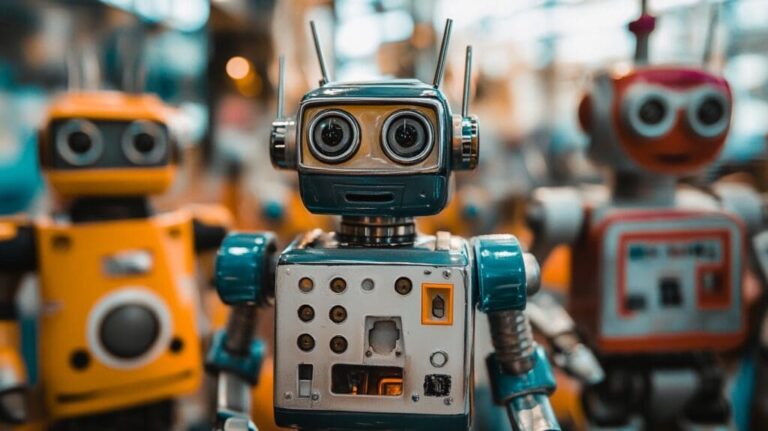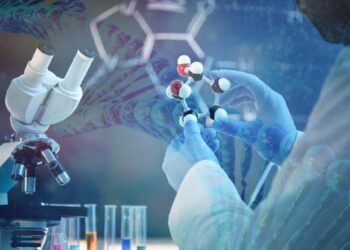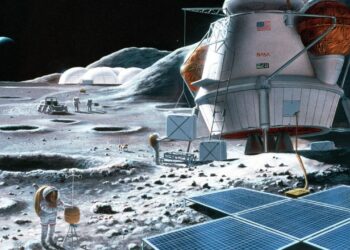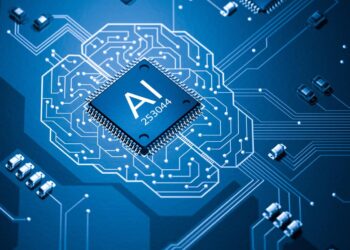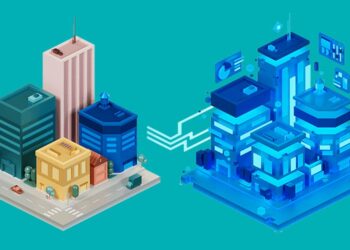Robotics, once the exclusive domain of manufacturing lines and scientific laboratories, is undergoing a profound and accelerating transformation. We are witnessing the next evolution in robotic capabilities, moving far beyond pre-programmed factory arms to intelligent, adaptable machines that are increasingly integrated into every facet of our lives. This isn’t just about automation; it’s about the emergence of sophisticated, autonomous systems capable of perception, decision-making, and complex interaction with humans and their environments. This in-depth exploration will delve into the cutting-edge advancements driving this revolution, its transformative impact across diverse industries, the compelling ethical considerations, and the promising future that awaits as robots become integral partners in building a more efficient, productive, and perhaps, more comfortable world. Understanding this seismic shift is crucial for anyone looking to navigate the technological landscape of the 21st century.
A Historical Perspective
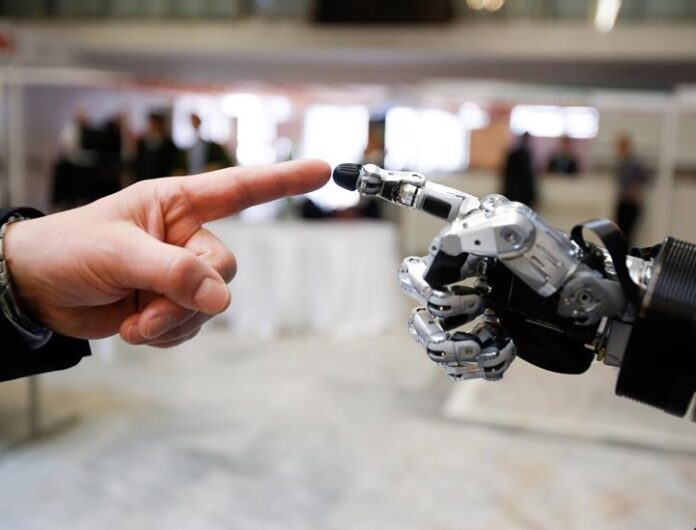
To truly grasp the significance of current robotic advancements, it’s helpful to briefly trace their evolution.
A. Early Beginnings
The concept of automated machines dates back centuries, but modern robotics truly began in the mid-20th century.
- Industrial Revolution Influence: Early machines aimed to automate repetitive, dangerous, or precise tasks in factories.
- “Unimate” (1961): Considered the first industrial robot, it was used by General Motors for handling hot die castings.
- Fixed Automation: These early robots were primarily mechanical arms, programmed for specific, repetitive tasks in structured environments. They lacked sensing, adaptability, or intelligence beyond their pre-programmed sequences.
B. The Rise of Programmable Robots
The late 20th and early 21st centuries saw significant advancements.
- Introduction of Sensors: Robots gained the ability to sense their environment (e.g., vision, force sensors), allowing for more flexible operations.
- Advanced Control Systems: Microprocessors enabled more complex programming and real-time adjustments.
- Diverse Applications: Robots began to appear in welding, painting, assembly, and even surgical assistance (e.g., da Vinci Surgical System).
- Still Largely Isolated: Most robots operated behind safety cages, separate from human workers, due to safety concerns and limited interaction capabilities.
C. The Current Wave
The present era is characterized by a confluence of powerful technologies.
- Artificial Intelligence (AI): Machine learning, deep learning, and computer vision enable robots to learn from data, perceive complex environments, and make intelligent decisions.
- Advanced Sensors: Lidar, radar, sophisticated cameras, and haptic sensors provide rich environmental data.
- Improved Actuators and Materials: Lighter, stronger materials and more dexterous manipulators allow for more human-like movements and fine manipulation.
- Human-Robot Collaboration (HRC): Robots are designed to work alongside humans safely, often sharing tasks and leveraging each other’s strengths.
- Autonomy: The ability to operate independently for extended periods, adapting to unforeseen circumstances without constant human oversight.
- Ubiquitous Computing and Connectivity: Cloud robotics and 5G enable robots to access vast computational resources and communicate seamlessly.
This evolution signifies a shift from mere automation to sophisticated, intelligent, and interactive systems that are moving beyond specialized industrial roles into broader societal integration.
The Foundational Technologies Powering Robotic Evolution
The “next evolution” in robotics is fueled by a synergy of cutting-edge technological advancements.
A. Artificial Intelligence (AI) and Machine Learning (ML)
AI is the brain of modern robots, enabling them to perceive, reason, and learn.
- Computer Vision: Allows robots to “see” and interpret their surroundings, recognizing objects, people, and navigating complex environments (e.g., facial recognition, object detection for autonomous vehicles).
- Natural Language Processing (NLP): Enables robots to understand and respond to human speech, crucial for human-robot interaction in service robots or personal assistants.
- Reinforcement Learning: Robots learn optimal behaviors through trial and error, often in simulated environments, then transferring that learning to the real world (e.g., teaching robots to grasp objects without explicit programming).
- Path Planning and Navigation: AI algorithms enable robots to plan efficient routes, avoid obstacles, and operate autonomously in dynamic environments (e.g., autonomous delivery robots, mobile robots in warehouses).
- Predictive Analytics: AI can analyze sensor data to predict equipment failure, enabling proactive maintenance in industrial robots, minimizing downtime.
B. Advanced Sensor Technology
Robots’ ability to interact intelligently depends on their senses.
- Lidar (Light Detection and Ranging): Uses lasers to create precise 3D maps of environments, crucial for autonomous navigation.
- Radar (Radio Detection and Ranging): Detects objects and their velocity, effective in adverse weather conditions where vision sensors might fail.
- High-Resolution Cameras (RGB-D): Provide both color and depth information, allowing robots to perceive objects in 3D space.
- Force-Torque Sensors: Enable robots to “feel” forces and adjust their grip or movement accordingly, crucial for delicate manipulation or safe human-robot interaction.
- Haptic Sensors: Allow robots to perceive textures, temperatures, and subtle pressures, improving their ability to handle diverse objects.
- Inertial Measurement Units (IMUs): Provide data on orientation and acceleration, critical for balancing and motion control in legged or flying robots.
C. Enhanced Actuators and Dexterity
Actuators are the “muscles” of robots, enabling movement.
- Electric Motors (Servos): Precise and efficient, allowing for highly controlled movements.
- Pneumatic and Hydraulic Systems: Provide high power density for heavy-duty tasks.
- Soft Robotics: A new field exploring flexible, compliant materials and designs, enabling robots to safely interact with delicate objects and navigate unstructured environments.
- Advanced Grippers: Multi-fingered hands, suction cups, and specialized grippers allow robots to manipulate a wide variety of objects with human-like dexterity.
- Exoskeletons and Prosthetics: Robotics extends to augmenting human strength and restoring mobility, using advanced actuators and control systems.
D. Advanced Materials Science
New materials are making robots lighter, stronger, and more functional.
- Lightweight Composites: Reduce robot weight, improving mobility and energy efficiency.
- Self-Healing Materials: Can repair minor damage, extending robot lifespan and reducing maintenance.
- Smart Materials: Materials that can change properties (e.g., stiffness, shape) in response to stimuli, enabling adaptive robotic structures.
- Biomimetic Materials: Materials inspired by nature, leading to more agile and robust robotic designs.
E. Connectivity and Cloud Robotics
The internet is becoming an integral part of the robotic ecosystem.
- Cloud Robotics: Robots can offload heavy computational tasks to the cloud, accessing powerful AI algorithms and vast datasets without needing onboard supercomputers.
- 5G/6G Networks: Provide the low latency and high bandwidth necessary for real-time cloud communication and coordination among robot fleets.
- Fleet Management: Centralized systems can manage and optimize the operations of large numbers of robots, sharing learned experiences and updating software.
- Digital Twins: Virtual replicas of physical robots or entire robotic systems, allowing for simulation, monitoring, and optimization in a digital environment.
F. Human-Robot Interaction (HRI) Frameworks
The ability for humans and robots to safely and intuitively work together is paramount.
- Shared Autonomy: Robots provide assistance while allowing human oversight and intervention.
- Intuitive Interfaces: Gesture control, voice commands, augmented reality overlays, and touch-sensitive surfaces enable natural human-robot communication.
- Safety Protocols: Advanced sensing and collision avoidance systems ensure robots can operate safely alongside humans.
- Social Robotics: Developing robots capable of recognizing and responding to human emotions, and engaging in more nuanced social interactions.
Robotics’ Transformative Impact Across Industries
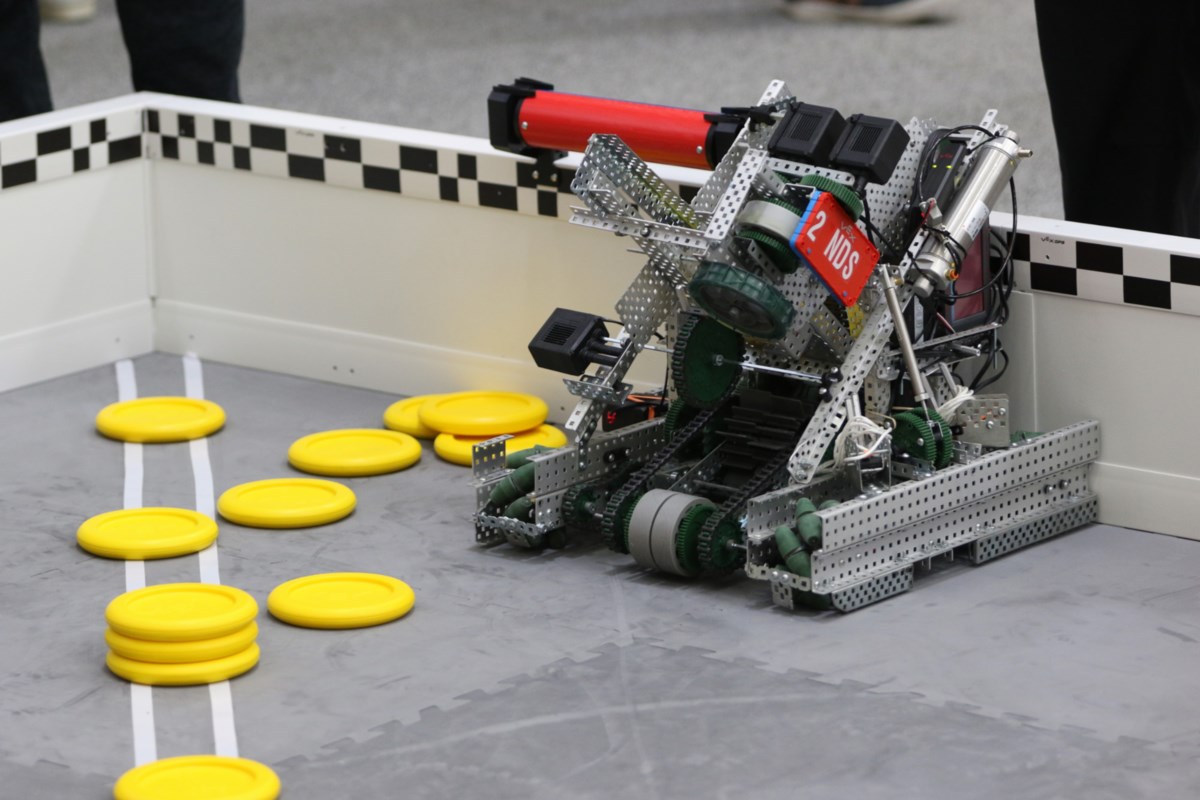
The widespread adoption of advanced robotics is poised to revolutionize numerous sectors, driving efficiency, safety, and new capabilities.
A. Manufacturing and Logistics
This traditional stronghold of robotics is seeing radical advancements.
- Flexible Automation: Robots can quickly reconfigure for different product lines or tasks, adapting to demand shifts.
- Human-Robot Collaboration (Cobots): Collaborative robots work alongside human employees, assisting with heavy lifting, repetitive tasks, or precision work, increasing productivity and safety.
- Autonomous Mobile Robots (AMRs): Navigate warehouses autonomously, moving goods, sorting packages, and optimizing inventory management, revolutionizing logistics.
- Micro-Robotics: Tiny robots for assembling micro-electronics or performing delicate tasks with extreme precision.
- Digital Twins of Factories: Robots contribute to real-time data for virtual factory models, allowing for optimization and predictive maintenance.
B. Healthcare
Robotics is transforming medical procedures, patient care, and assistive technologies.
- Surgical Robots: Systems like the da Vinci robot enhance surgeon precision and dexterity for minimally invasive procedures, leading to faster patient recovery.
- Rehabilitation Robotics: Exoskeletons and robotic devices assist patients with physical therapy, helping them regain mobility after injuries or strokes.
- Hospital Logistics: Autonomous robots transport medicines, linens, and supplies, freeing up medical staff for patient care.
- Telepresence Robots: Allow doctors to remotely consult with patients or oversee procedures from a distance.
- Assisted Living Robots: Robots designed to assist the elderly or disabled with daily tasks, companionship, and monitoring.
- Drug Discovery and Lab Automation: Robots automate high-throughput screening and experimentation in labs, accelerating research.
C. Agriculture
Robots are addressing labor shortages and improving efficiency in farming.
- Autonomous Tractors and Harvesters: Self-driving agricultural machinery performs tasks like planting, spraying, and harvesting with greater precision and efficiency.
- Weeding Robots: Use computer vision to identify and remove weeds without herbicides, reducing environmental impact.
- Harvesting Robots: Designed to pick delicate fruits and vegetables, minimizing damage and waste.
- Livestock Monitoring: Drones and ground robots monitor animal health, behavior, and location, optimizing farm management.
- Indoor Farming and Vertical Farms: Robots manage planting, watering, and harvesting in controlled environments, maximizing yield.
D. Service Industries
Robots are increasingly visible in public-facing roles.
- Hospitality Robots: Greet guests, deliver room service, or prepare food in restaurants.
- Retail Assistance: Robots can guide customers to products, manage inventory, or even check out items.
- Cleaning and Sanitation: Autonomous cleaning robots (e.g., floor scrubbers) are common in large public spaces, improving hygiene.
- Delivery Robots: Autonomous ground or aerial drones for last-mile delivery of food, packages, and medical supplies.
- Customer Service Bots: While often software-based, physical robotic kiosks can provide interactive assistance in public areas.
E. Exploration and Hazardous Environments
Robots are indispensable for dangerous or inaccessible missions.
- Space Exploration: Rovers (e.g., Mars Perseverance) explore distant planets, while robotic arms assist astronauts on space stations.
- Deep-Sea Exploration: Remotely operated vehicles (ROVs) and autonomous underwater vehicles (AUVs) explore ocean depths, map the seafloor, and inspect underwater infrastructure.
- Disaster Response: Robots can enter collapsed buildings, detect survivors, or handle hazardous materials (e.g., after nuclear accidents).
- Demining and Bomb Disposal: Robots safely identify and neutralize explosive devices, protecting human lives.
- Infrastructure Inspection: Drones and ground robots inspect bridges, pipelines, and power lines, identifying defects and ensuring safety.
Ethical Dilemmas and Societal Considerations
As robots become more sophisticated and integrated, critical ethical and societal questions arise.
A. Job Displacement and the Future of Work
This is perhaps the most debated societal impact.
- Automation of Routine Tasks: Robots are increasingly capable of performing repetitive, physical, and even some cognitive tasks, potentially displacing human workers.
- Job Creation: Robotics also creates new jobs in design, manufacturing, maintenance, and management of robotic systems.
- Reskilling and Upskilling: Societies must invest in education and training programs to help workers adapt to new roles and acquire skills that complement robotic capabilities (e.g., creativity, critical thinking, social intelligence).
- Universal Basic Income (UBI): Some propose UBI as a potential solution to economic disruption caused by widespread automation.
B. Safety and Accountability
Ensuring the safe operation of autonomous robots is paramount.
- Collision Avoidance: Developing fail-safe systems to prevent robots from harming humans or damaging property.
- Liability: In case of an accident involving an autonomous robot, who is responsible? The manufacturer, programmer, operator, or the AI itself?
- Ethical Guidelines: Establishing clear ethical guidelines for robot behavior, especially in complex or life-critical situations.
C. Bias and Discrimination
If robots learn from biased data, they can perpetuate and even amplify societal prejudices.
- Data Bias: AI-powered robots trained on unrepresentative or biased datasets can exhibit discriminatory behavior (e.g., in facial recognition, hiring decisions).
- Fairness: Ensuring that robotic systems do not unfairly disadvantage certain groups of people.
- Transparency: Understanding how robots make decisions, especially in critical applications, requires explainable AI.
D. Privacy and Surveillance
Robots equipped with advanced sensors can collect vast amounts of data about individuals and environments.
- Data Collection: How is this data stored, used, and protected? Who has access to it?
- Surveillance Risks: Robots could be used for invasive surveillance, raising concerns about individual liberties.
- Data Security: Protecting robotic systems from hacking and unauthorized access is crucial.
E. Social and Psychological Impact
The integration of robots into daily life will have psychological effects.
- Human-Robot Companionship: The emotional bonds formed with companion robots, especially for the elderly or isolated individuals, raise questions about their impact on human relationships.
- Dependence on Automation: Over-reliance on robots could lead to a decline in certain human skills or capabilities.
- Anthropomorphism: The tendency to attribute human qualities to robots, which can lead to unrealistic expectations or emotional attachments.
- Ethical Treatment of Robots: As robots become more sophisticated, questions may arise about their “rights” or the ethics of how they are treated, particularly for advanced AI systems.
The Road Ahead
The future of robotics is not just about building more capable machines; it’s about responsibly integrating them into the fabric of society.
A. Continued Technological Advancement
Research and development will continue to push the boundaries.
- Swarm Robotics: Large numbers of simple robots working together to achieve complex tasks.
- Bio-Hybrid Robotics: Integrating biological components with robotic systems.
- Neuromorphic Computing: Developing brain-inspired computing architectures for more efficient and intelligent robots.
- Quantum Robotics: Exploring how quantum computing might enhance robotic AI and capabilities in the long term.
- Cloud-Native Robotics Platforms: Easier development and deployment of robotic applications via cloud services.
B. Policy and Regulation
Governments and international bodies are grappling with how to regulate robotics.
- Standardization: Developing safety standards and interoperability protocols for diverse robotic systems.
- Ethical Frameworks: Establishing national and international guidelines for responsible AI and robotics development.
- Legal Frameworks: Updating laws to address liability, privacy, and employment issues related to robotics.
C. Public Education and Engagement
Societal acceptance of robotics depends on public understanding and trust.
- Transparency: Being transparent about robotic capabilities, limitations, and data usage.
- Education: Informing the public about the benefits of robotics and preparing them for a robot-augmented future.
- Dialogue: Fostering open discussions about the societal implications and ethical challenges.
D. Human-Robot Collaboration as the Norm
The future is likely to be characterized by humans and robots working side-by-side, each leveraging their unique strengths.
- Augmentation, Not Replacement: Robots will increasingly augment human capabilities, allowing us to achieve more.
- Specialization: Humans will focus on tasks requiring creativity, critical thinking, empathy, and complex problem-solving, while robots handle repetitive, dangerous, or highly precise tasks.
- Intuitive Interfaces: The development of more natural ways for humans to communicate and instruct robots.
Conclusion
The Robotics: Next Evolution is not merely a technological trend; it is a fundamental shift in how we conceive of labor, interaction, and even companionship. From enhancing precision in surgery to automating agriculture and exploring the cosmos, intelligent robots are reshaping industries and pushing the boundaries of what is possible. While the promise of increased efficiency, productivity, and safety is immense, the journey also necessitates a profound consideration of ethical dilemmas, job markets, and societal integration. By fostering responsible innovation, prioritizing safety and fairness, and preparing our workforce for a collaborative future, we can ensure that this next evolution of robotics truly serves humanity’s best interests, paving the way for a more advanced, and ultimately, a more harmonious automated future.

